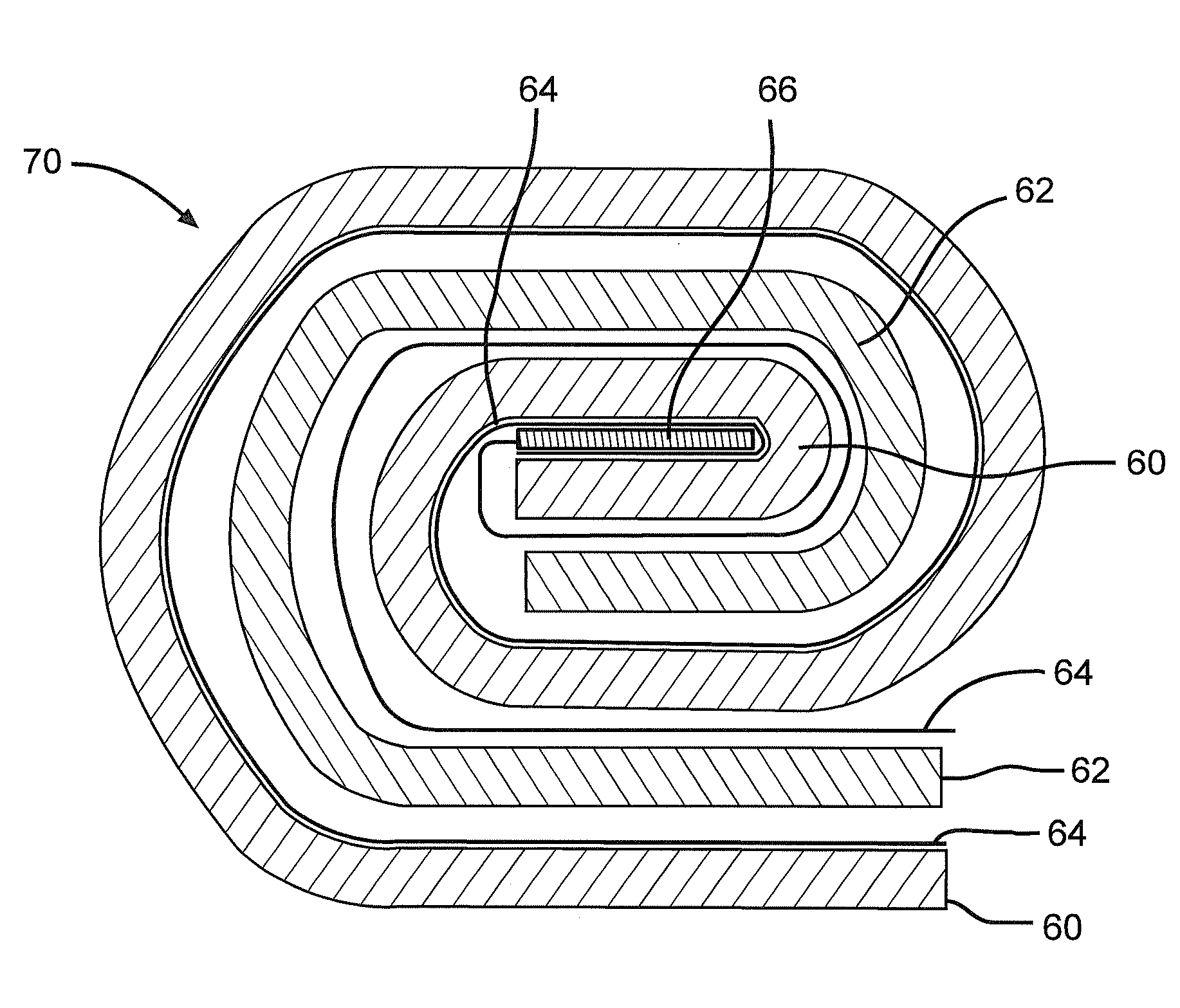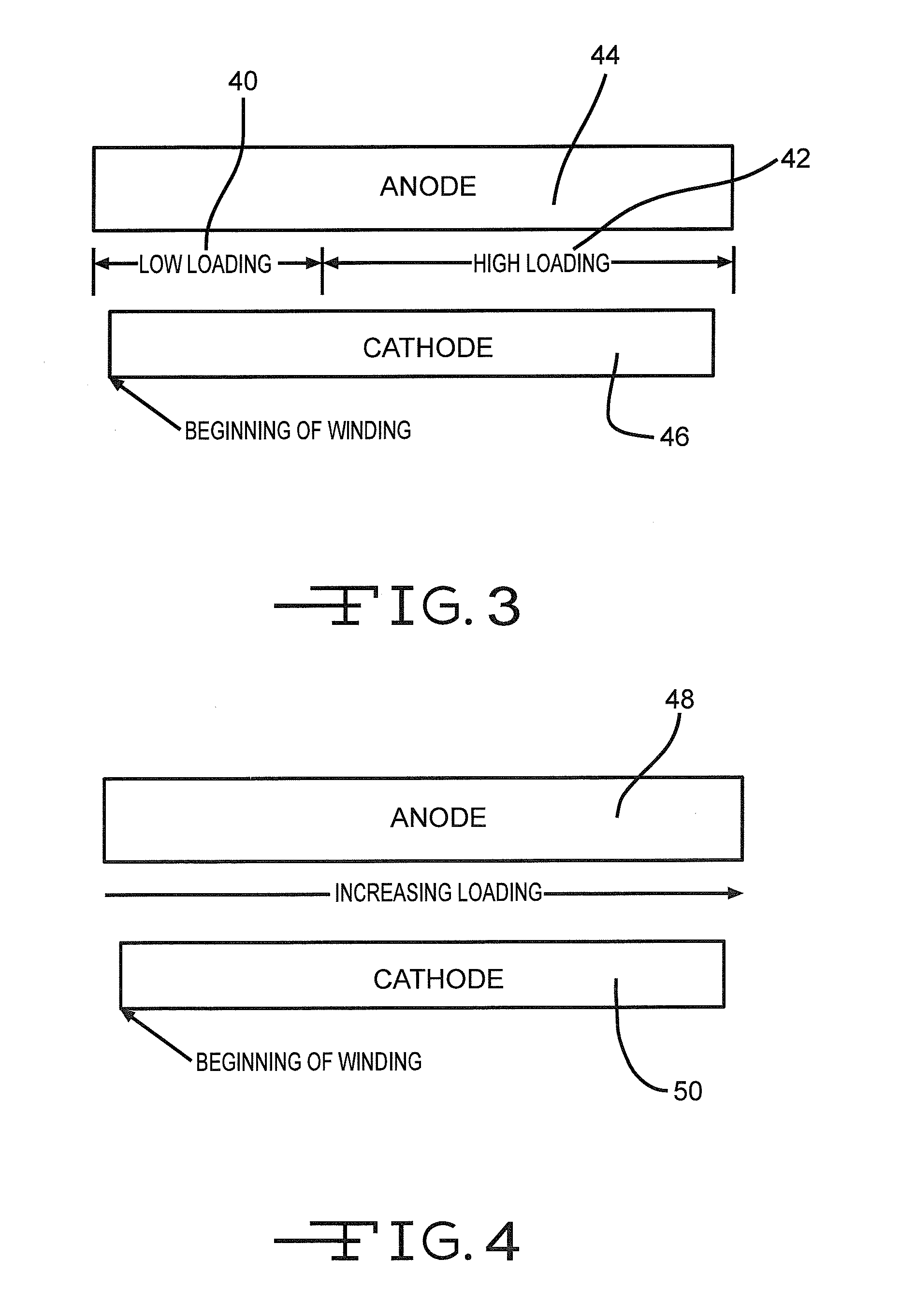Method of making electrodes with distributed material loading used in electrochemical cells
a technology of electrochemical cells and materials, applied in the field of electrochemical power sources, can solve the problems of insufficient address of conventional electrode manufacturing methods, affecting the mechanical flexibility of densely compacted electrodes, and reducing the mechanical flexibility of electrodes, etc., to achieve the effect of optimizing mechanical and electrochemical properties of the resulting electrode, high energy density, and long cycle li
- Summary
- Abstract
- Description
- Claims
- Application Information
AI Technical Summary
Benefits of technology
Problems solved by technology
Method used
Image
Examples
example i
[0066]A cathode powder slurry was prepared with ingredients listed in Table 1. In particular, powdered LiCoO2 was mixed with KS6 graphite as a conductive carbonaceous material, polyvinylidene fluoride (PVDF) as a binder and N-methyl-2-pyrrolidinone (NMP) as a solvent to form a slurry.
TABLE 1MaterialWeight %LiCoO291.0% PVDF3.0%KS6 Graphite6.0%NMP55% of powder weight
[0067]The slurry was thoroughly mixed by a motor-driven stirring blade for about an hour and then coated onto a 25.4 μm thick aluminum substrate with a doctor-blade. The gap between the substrate and the doctor-blade was 254 μm, which translates to a material loading of 44.8 mg / cm2 as listed in Table 2.
TABLE 2ElectrodeCoating gapLoadingMixture(μm)(mg / cm2)Example I25444.8Example II35652.8Example III45770.9
[0068]The coating was dried in air overnight and was further dried at 100° C. in an oven with vacuum for eight hours. A second coating with the same loading as the first one was made on the other, bare side of the aluminum...
example ii
[0071]A double-sided cathode coating with the slurry formulation listed in Table 1 was made the same way as in Example I, except the gap between the substrate and the doctor-blade was 356 μm. As listed in Table 2, this translates into a material loading of 52.8 mg / cm2. The coating was dried, compacted and tested for mechanical integrity in a similar manner as described in Example I. FIG. 8B shows bendability of this coating vs. coating density. The bendability onset density was about 3.55 g / cm3.
example iii
[0072]A double-sided cathode coating with the slurry formulation listed in Table 1 was made the same way as in Example I, except the gap between the substrate and the doctor-blade was 457 μm. As listed in Table 2, this translates into a material loading of 70.9 mg / cm2. The coating was dried, compacted and tested for mechanical integrity in a similar way as in Example I. FIG. 8C shows bendability of this coating vs. coating density. The bendability onset density was about 3.45 g / cm3.
[0073]FIG. 9 is a graph showing bendability onset density vs. material loadings for Examples I, II and III. The data showed that a higher bendability onset density could be obtained with lower material loading.
PUM
| Property | Measurement | Unit |
|---|---|---|
| weight percent | aaaaa | aaaaa |
| weight percent | aaaaa | aaaaa |
| weight percent | aaaaa | aaaaa |
Abstract
Description
Claims
Application Information
 Login to View More
Login to View More - R&D
- Intellectual Property
- Life Sciences
- Materials
- Tech Scout
- Unparalleled Data Quality
- Higher Quality Content
- 60% Fewer Hallucinations
Browse by: Latest US Patents, China's latest patents, Technical Efficacy Thesaurus, Application Domain, Technology Topic, Popular Technical Reports.
© 2025 PatSnap. All rights reserved.Legal|Privacy policy|Modern Slavery Act Transparency Statement|Sitemap|About US| Contact US: help@patsnap.com



